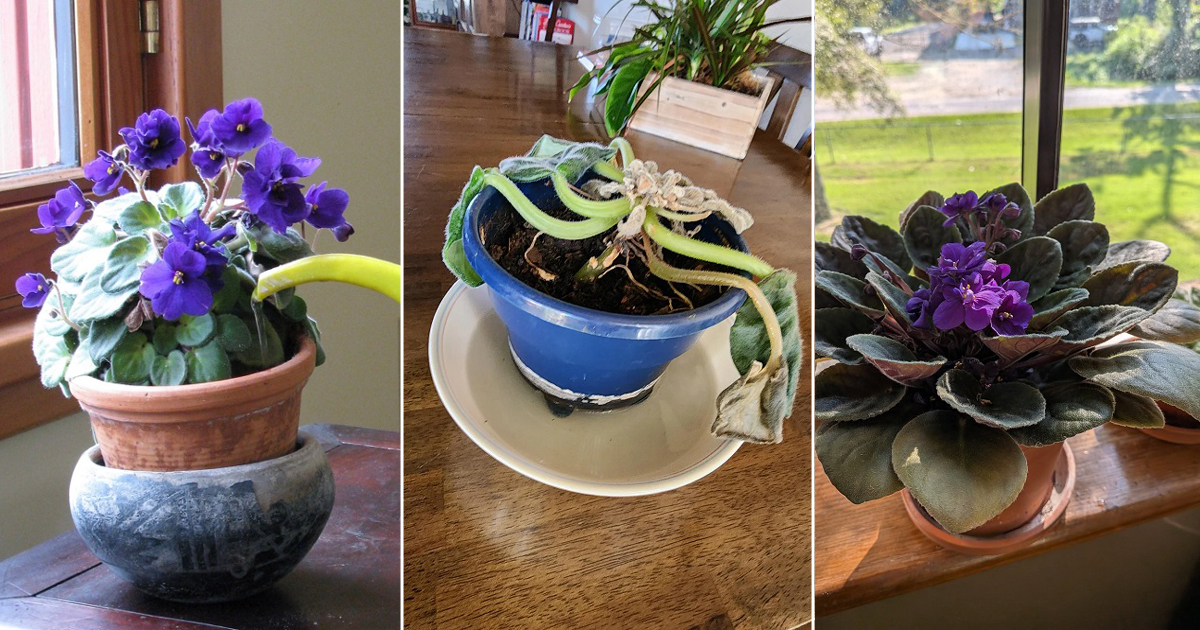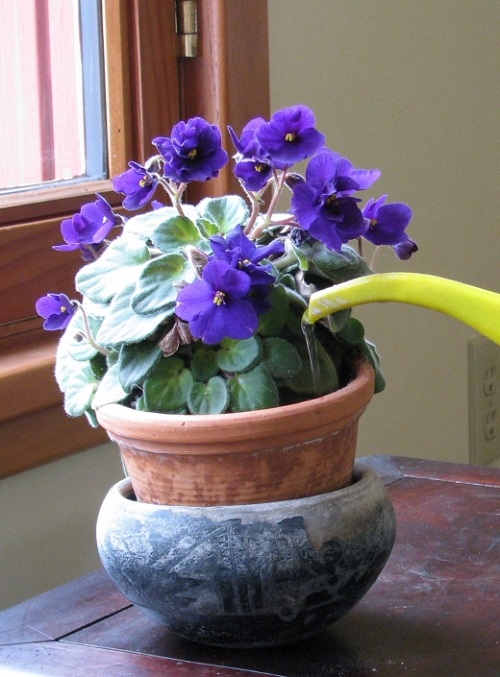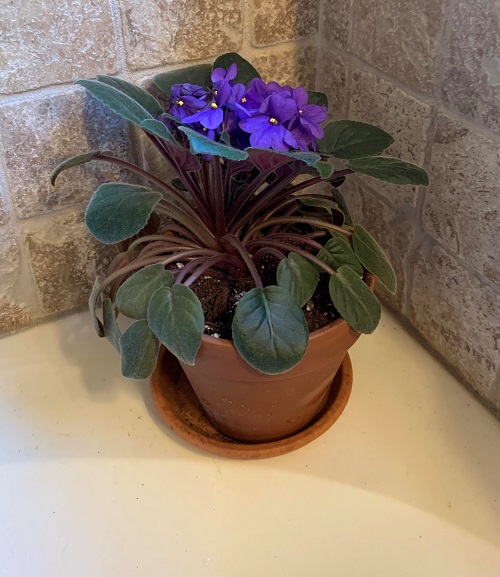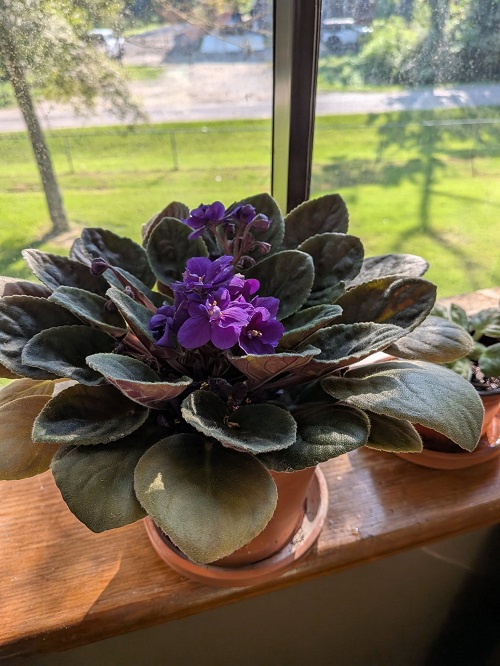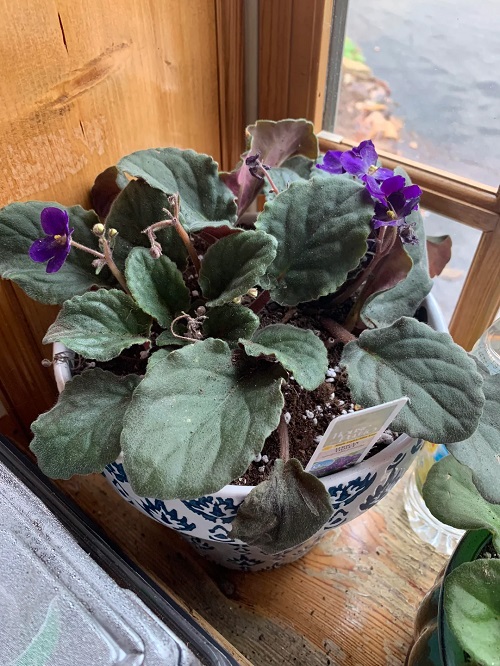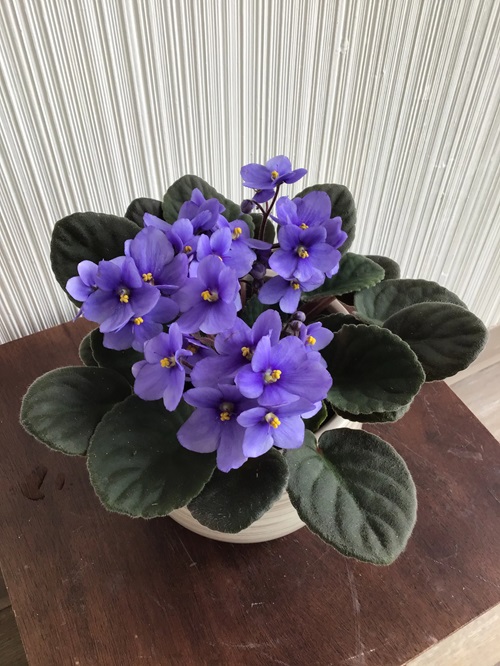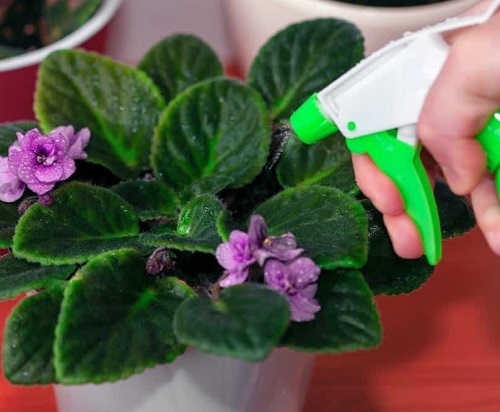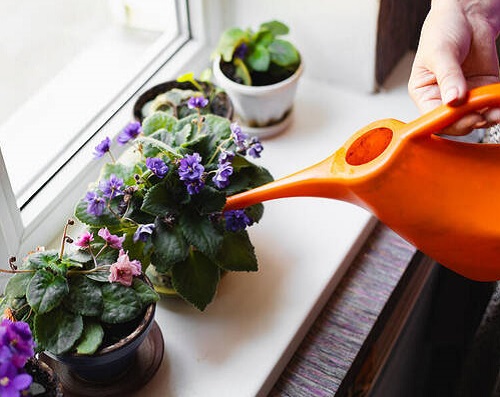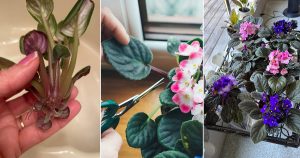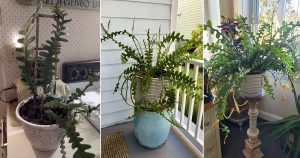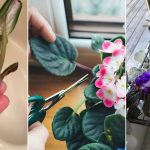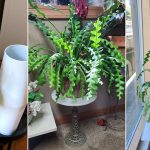Avoid the common mistakes that kill African violets slowly. Learn simple tips to keep their leaves healthy and their blooms bright all year.
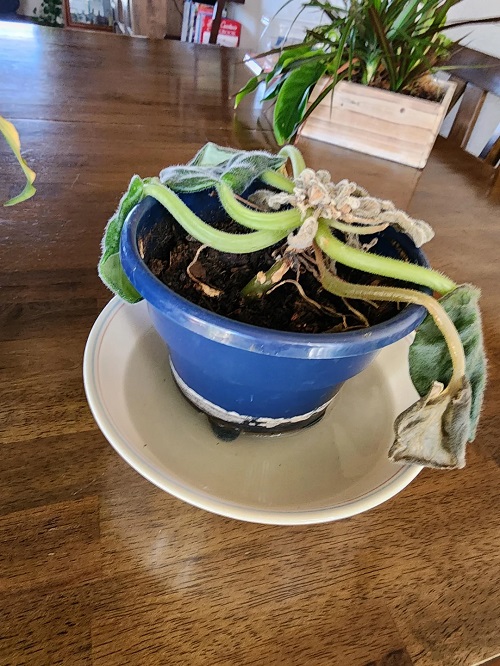
Many indoor plant owners make common mistakes when growing African violets. To help them stay healthy and produce beautiful flowers, it’s important to avoid these Mistakes that kill African Violets slowly. In this article, you will look at the most common African violet problems and how to prevent them.
African violets are often seen as difficult plants. Keeping them alive without any growth problems is already a success, and getting them to bloom regularly can feel even harder. But with some knowledge and careful care, they are not as hard to grow as they seem.
Mistakes that Kill African Violets Slowly
1. Watering The Leaves
How you water African violets matters as much as the water you use. Their soft, fuzzy leaves hold onto water drops easily. These drops do not dry quickly. Even one small drop of cold water can sit on the leaves for a long time and leave ugly spots.
Many gardeners see these spots and think the plant has pests or a disease. But the problem is often just the way the plant is watered. Always pour water onto the soil and try not to get the leaves wet.
The easiest way to prevent leaf spots is to water from the bottom. Put the pot in a sink or bucket with water that reaches halfway up the pot. Let the plant sit for 15–30 minutes so it can soak up the water it needs. Then move it back to its place. Once a month, water from the top to rinse the soil, and then continue bottom watering again.
2. Growing In Little To No Light
The last lighting mistake is very common and can cause many problems, such as slow growth and yellow leaves. African violets like shade, but they still need moderate to bright indirect light indoors to grow well and to bloom. If they sit in a dark spot with almost no sunlight, they will stop flowering. The leaves may turn yellow and soft, and the plant may stop growing.
They might survive in low light for a short time, but they won’t stay healthy or live long, especially if they are young plants. Good light is important from the start.
Keep your African violet near a bright east-, south-, or west-facing window, but make sure it is not hit by direct sunlight. Also, check that nothing blocks the light from reaching the plant. With the right amount of indirect light, your African violets will stay healthy and happy.
3. Placing Them In Direct Sunlight
African violets love shade. In nature, they grow under trees where they are protected from strong sunlight. This is one reason they make great houseplants. But because they produce flowers, some people think they need full sun all day to bloom.
This idea leads to problems. When African violets sit in direct sunlight for too long, their leaves get sunburned. This causes brown patches that look dry and damaged. Once a leaf turns sunburned, it cannot turn green again. That is why it’s important to avoid direct sunlight from the start.
The best place for African violets is in bright, indirect light all day. They do well in bedrooms or other areas away from harsh sunlight. In this kind of light, they can grow and bloom without harming their leaves.
4. Not Rotating Pots
You may notice your African violet growing unevenly and losing its nice, round shape. This happens when one side of the plant gets more light than the other. That side grows faster, while the other side stays smaller. If the light is too strong, the leaves on the bright side may curl or get damaged, making the plant look even more uneven.
There is an easy way to stop this. Rotate your pot once a week. This helps each side of the plant get the same amount of light over time. With regular rotation, your African violet will stay even, compact, and healthy.
5. Placing Them In The Path Of Drafts
African violets also dislike drafts, but many plant owners forget this. Strong or constant airflow around the plant dries the soil very quickly. It can also damage the leaves and cause the flowers to fall off. In winter, cold drafts create sudden temperature changes that can shock the plant and harm its health. Hot air from radiators can cause similar problems.
These plants do like gentle airflow, but too much air movement is harmful. Keep African violets away from open windows, air conditioners, and radiators. This will protect them from damage and help them stay healthy.
6. Ignoring Temperature Changes
Houseplants need steady conditions to stay healthy. Most of them come from tropical places where the weather stays almost the same all year. Because of this, sudden changes in temperature can cause serious problems. African violets are no different. They love warm air and prefer temperatures above 65°F all year. If the temperature drops quickly, especially near cold windows in winter, the plant may lose leaves and flowers and develop other issues.
Keep your African violet in the warmest room in your home and try to maintain stable temperatures all year long. Do not place them outside, especially during winter, because the cold can cause permanent damage.
7. Too Much Fertilizer
Fertilizing is an important part of taking care of houseplants. As African violets grow and produce flowers, they use up the nutrients in the soil. After some time, they need new nutrients to stay healthy and continue growing.
But fertilizer is not a quick fix for problems like slow growth or no blooms. Some people think fertilizer will solve everything, but it cannot fix every issue. It is helpful, but it cannot force a plant to grow faster or become larger overnight. Using fertilizer when the plant does not need it can actually harm it. Too much fertilizer can burn the soft leaves and may even cause parts of the plant to die.
Use a fertilizer made for African violets and follow the instructions on the label. It is always safer to use less rather than more. This will keep your plant safe from damage and help it grow well.
8. Repotting Into A Larger Pot
You don’t need to repot African violets very often, but they will need fresh soil at some point. When you do this, you may also need a slightly bigger pot to fit the growing roots. At this stage, it is important not to choose a pot that is too big. African violets prefer tight spaces. When the roots feel slightly cramped, the plant focuses on growing leaves and flowers above the soil. If the pot is too large, the roots will keep spreading instead, and the rest of the plant will grow slowly. The extra soil can also stay wet for too long, which may cause root rot.
These plants stay small their whole lives and never need a very big pot. Move them only one pot size up, or clean and reuse the same pot if the plant still fits and is growing well.
9. Ignoring Pests And Disease

A single spot or a fallen leaf is usually not a big problem. But if you see many spots, tiny bugs, or leaves turning yellow and wilting, your plant may have pests or a disease.
Many gardeners, especially busy ones, ignore these signs or wait to fix them later. Unfortunately, the problem gets worse over time. This makes it harder to save the plant and can even put it at risk of dying.
If you see signs of pests or disease, act quickly. Treat your African violet and check other houseplants nearby to keep them safe too.
10. Using Cold Water
Many problems with African violets start with the care task we do most often – watering.
People often worry about watering too much or too little. These are serious mistakes, but most gardeners already know to avoid them. There are other mistakes that are less obvious.
One is using cold water. African violet roots are very sensitive, and cold water can shock the plant. This can slow growth and take time for the plant to recover.
It’s better to use room temperature or slightly warm water. This is similar to the water they would get outdoors and helps the plant grow and produce flowers.

